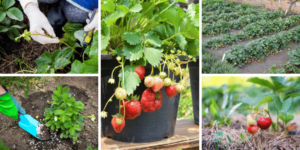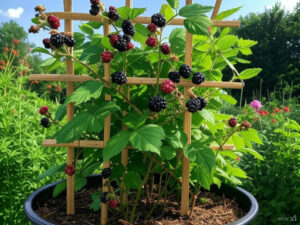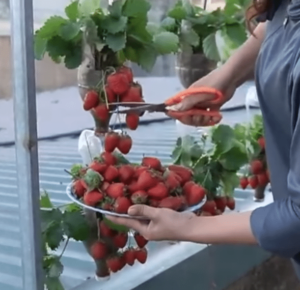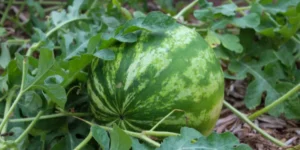How to Grow a Continuous Supply of Blueberries at Home
Blueberries are a delicious and nutrient-rich fruit, but purchasing them regularly can be expensive. Fortunately, growing your own blueberries is easier than you might think. With the right strategy, you can cultivate a thriving, year-round supply of fresh, organic blueberries right in your backyard or even in containers.
This comprehensive guide will walk you through the best methods to grow blueberries successfully, from selecting the right varieties to optimizing growing conditions for continuous harvests.
Why Grow Your Own Blueberries?
Blueberries offer more than just a tasty treat—they are packed with antioxidants, vitamins, and fiber that support heart health, brain function, and immune strength. While store-bought blueberries can be costly, growing your own not only saves money but also ensures access to fresh, chemical-free berries. Additionally, blueberry plants enhance your garden’s aesthetics with their delicate spring blossoms, lush green leaves, and striking red foliage in fall.
Step 1: Selecting the Right Blueberry Varieties
To maintain a steady supply of blueberries, plant different varieties that ripen at various times. By combining early, mid, and late-season varieties, you can enjoy a continuous harvest from early summer to late fall.
Recommended Blueberry Varieties
Early-Season:
Duke – High-yield variety with firm, flavorful berries.
Patriot – Cold-hardy and produces large, early-season berries.
Mid-Season:
Bluecrop – One of the most popular varieties, known for large, juicy berries.
Legacy – Sweet berries with an extended harvesting period.
Late-Season:
Elliott – Produces high yields well into late summer.
Aurora – Extends the season even further with tart, firm berries.
By planting a mix of these varieties, you can enjoy a continuous supply of fresh blueberries for months.
Step 2: Creating the Ideal Growing Conditions
To maximize blueberry production, provide optimal soil conditions, sunlight, and watering schedules.
Soil Preparation
Blueberries require acidic soil with a pH between 4.5 and 5.5. Test your soil with a home kit or send a sample to an extension service. If the pH is too high, lower it by incorporating peat moss, pine needles, or elemental sulfur.
Sunlight Requirements
Plant blueberries in a location that receives at least 6-8 hours of direct sunlight daily. Full sun exposure enhances fruit sweetness and maximizes yield.
Watering Needs
Blueberries need consistent moisture, particularly during the growing season. Water deeply once or twice a week, ensuring the soil remains moist but not waterlogged. Applying mulch, such as pine bark or wood chips, helps retain moisture and regulate soil temperature.
Proper Spacing
For optimal growth and air circulation, plant blueberry bushes 3-4 feet apart. Proper spacing helps prevent disease and allows room for expansion.
Step 3: Propagating Blueberries for Continuous Growth
Expanding your blueberry supply is easy through propagation. Follow these steps to grow new plants from cuttings:
How to Propagate Blueberries
Take Cuttings – In early spring, cut 6-8 inch sections from a healthy blueberry plant. Ensure each cutting has at least 3-4 leaf nodes.
Prepare for Rooting – Remove leaves from the lower half of each cutting and dip the cut end in a rooting hormone (optional but recommended).
Plant the Cuttings – Insert each cutting into a pot filled with equal parts peat moss and perlite for proper drainage.
Provide Care – Keep cuttings in a location with indirect sunlight and maintain moist (but not soggy) soil.
Transplant – After 8-12 weeks, once roots have developed, transfer the new plants into your garden or containers.
Step 4: Pruning for High Yields
Pruning is essential for maintaining healthy blueberry plants and encouraging consistent fruit production.
Pruning Guidelines
When to Prune – Late winter or early spring before new growth emerges.
How to Prune:
Remove dead, damaged, or diseased branches.
Cut back older branches that have stopped producing fruit.
Thin out small, weak branches to improve airflow and light penetration.
Regular pruning encourages new growth, leading to higher berry production year after year.
Step 5: Protecting Your Blueberries from Birds
Birds love blueberries as much as humans do! To safeguard your harvest, use the following strategies:
Netting – Cover bushes with bird netting during the ripening period.
Scare Tactics – Hang shiny objects, like aluminum foil strips or wind chimes, to deter birds.
Bird Feeders – Place feeders away from blueberry bushes to divert birds elsewhere.
Step 6: Growing Blueberries in Containers
If space is limited, you can still grow blueberries in pots. Container gardening allows better control over soil acidity and placement for optimal sunlight exposure.
Container Gardening Tips
Choose the Right Pot – Use a container at least 18-24 inches wide and deep with proper drainage holes.
Use an Acidic Soil Mix – Combine peat moss, pine bark, and perlite for best results.
Water and Fertilize Regularly – Blueberries in containers need frequent watering and slow-release fertilizer for acid-loving plants.
Winter Protection – Move containers to a sheltered location during extreme winter conditions.
Harvesting and Storing Blueberries
Blueberries are ripe when they are fully blue, plump, and easily detach from the stem. For the best flavor:
Wait for Full Ripeness – The longer berries stay on the bush after turning blue, the sweeter they become.
Store Properly – Fresh blueberries last up to two weeks in the fridge and can be frozen for long-term storage.
Conclusion
With the right approach, you can enjoy an endless supply of fresh, homegrown blueberries. Whether planting in a garden or growing in containers, these methods will help you cultivate a thriving blueberry harvest year after year. Start growing today and reap the benefits of delicious, nutrient-rich blueberries straight from your backyard!
Share this content:











